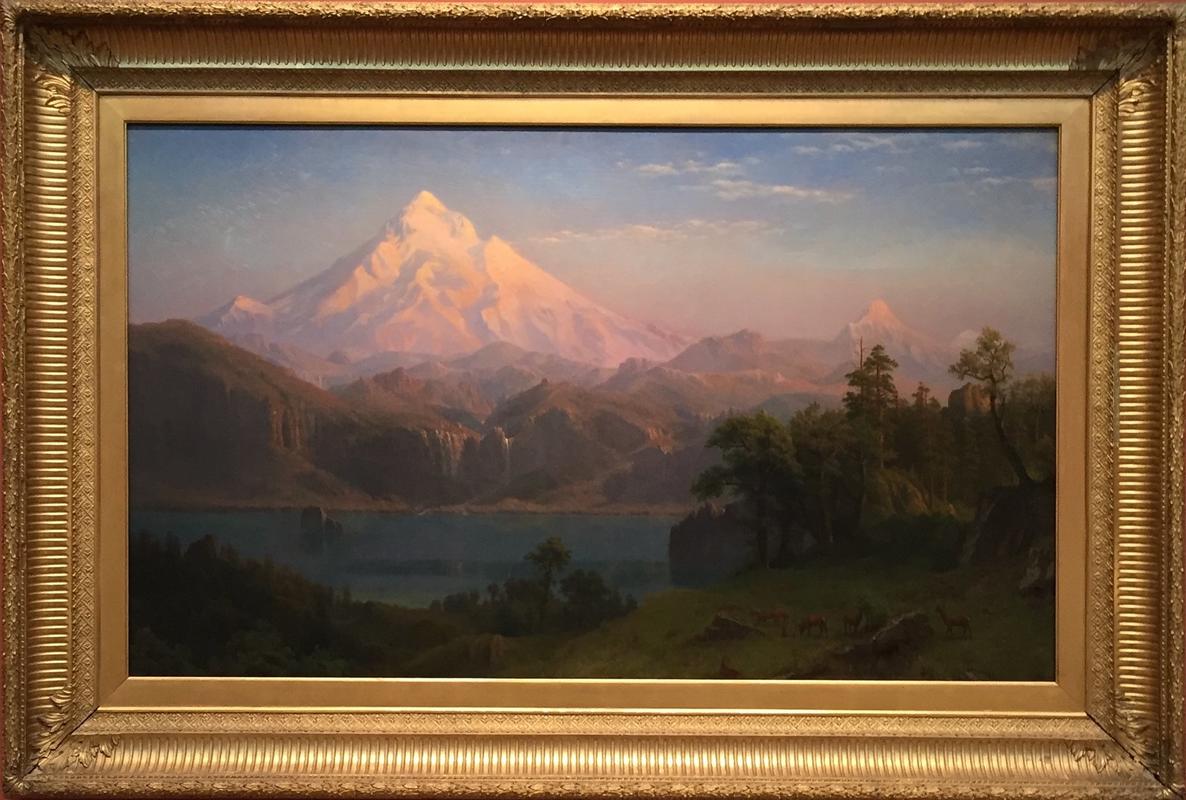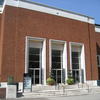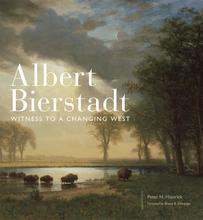More about Mount Hood
- All
- Info
- Shop

Contributor
Albert Bierstadt’s rendition of the infamous Oregon landmark, Mount Hood, 1896, gives Portland an extra feather in its cap.
If you’ve been to Portland or Oregon in general, you’ll know that Oregonians love Mount Hood, the tallest stratovolcano in Oregon, like, a lot. Like it’s the greatest mountain ever. I can attest to this as I lived in Oregon for fives years back in the day. Anyways, I digress.
Mount Hood is a beautiful area; home to the WPA’s Timberline Lodge built during the Great Depression with an array of artwork created by the Federal Arts Project, which funded artists, among other disciplines a means to live, we love you FDR! Mount Hood is also the homebase for Portlanders to escape the city, enticed by the mountain’s snow sports in the winter, and hiking in the summer--in short, Mount Hood is Oregon’s natural wonder and playground. REI’s #optoutside campaign probably has garnered the most traction for their campaign from this Portland crowd and you can quote me on that.
But, like any natural wonder, one must trek with caution. More than 130 people have lost their lives traversing Mount Hood including a high school group in 1986 who were trapped on the mountain during an intense storm. Two members of the group left camp to searching for help, yet they were unable to find their way back spending three days searching for their stranded companions. By the time they reached the camp, only two of the remaining students survived. In 2002, an evacuation went terribly wrong, killing not only three hikers, but the rescue helicopter crashed into the mountainside while attempting to evacuate an injured hiker from the group. And in 2006, three hikers attempting a winter ascent were never found after a multi-day long search that garnered national attention. Moral of the story, do not go hiking in the winter; Mount Hood will win.
Our light-infusing, romantic nineteenth century artist, Albert Bierstadt was all about the dramatization of a place; accurate geography wasn’t his greatest strength instead focusing on the romanticization of a location. His depiction of Mount Hood idealizes the mountain by exaggerating it’s height, and including a view of the Columbia River and Multnomah Falls (that famous waterfall you see everywhere on Instagram) in the foreground of the painting. Unfortunately, you cannot see the river or the falls from the base of the mountain like you can in Bierstadt’s rendition, creating a romanticized view of Oregon’s top attraction. To be fair, back in the 1800s it was near impossible to access the gorge or the falls, and the only way to do so was to float your wagon down the river, fighting off dangerous rapids, or hike through the Cascade Mountains. So in a way Bierstadt is doing everyone a favor, bringing the glory of Oregon’s beautiful landscape to the viewer by canvas, avoiding the need to float down the freezing river or mountain-goating through the Cascade Mountains, I know, he was such a generous man, not exploitive at all, *sarcasm.*
Bierstadt traveled extensively around the American West and he designed his renditions to give urban viewers a sense of place, often neglecting the realistic adaption of a particular location. He traveled to Oregon first in the early 1860s painting Mount Hood four times over his career. Mount Hood, 1896 is the last version of the mountain Bierstadt depicted in his catalog of American West landscapes.
Sources
- The Oregon Encyclopedia. March 17, 2018. Accessed June 22, 2018. https://oregonencyclopedia.org/articles/mt_hood/#.Wy0zgVVKiM8.
- Murno, Sarah. "Timberline Lodge." The Oregon Encyclopedia. March 17, 2018. Accessed June 22, 2018. https://oregonencyclopedia.org/articles/timberline_lodge/#.Wy1ezVVKiM9.
- Bierstadt, Albert. Mount Hood. 1896. Portland Art Museum, Portland, Oregon. In Online Collections. Accessed June 22, 2018. http://www.portlandartmuseum.us/mwebcgi/mweb.exe?request=record;id=1126….
- Kelly, Julie. "Road Trip: Mount Hood, Oregon." National Geographic. September 14, 2010. Accessed June 22, 2018. https://www.nationalgeographic.com/travel/road-trips/mount-hood-oregon-….
- Kloster, Tom. "Bierstadt In Oregon." The WyEast Blog(blog), March 31, 2017. Accessed June 22, 2018. https://wyeastblog.org/2017/03/31/bierstadt-in-oregon/.
Featured Content
Here is what Wikipedia says about Mount Hood (painting)
Mount Hood is an 1869 painting by the German-American painter Albert Bierstadt, and part of the collection of the Portland Art Museum in Portland, Oregon, in the United States. It portrays a view of the mountain in Oregon with the same name.
To Bierstadt, communicating the metaphor of the monumentality of the American West was more important than making the painting geographically accurate. As a result, many features of the painting were modified from the real landscape, such as the exaggerated height of Mount Hood and different landscape components that could not all be viewed at the same time in a single place along the Columbia River Gorge—showing the mountain as it would be seen from Portland but the landscape as if seen from Multnomah Falls and the northern shore of the Columbia River.
Check out the full Wikipedia article about Mount Hood (painting)













